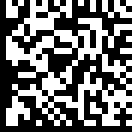As manufacturing continues to evolve, so do the requirements of their end users.
Quality, price and lead time have never meant more to the manufacturing industry, so looking for ways to improve these criteria without sacrificing one for the other has become a necessity.
In the manufacturing world, this concept is known as getting “lean”.
I have seen success among many of my manufacturing customers by implementing 2D barcodes on their Print Circuit Boards (PCBs) and component reels.
The goals have been similar; to provide furthered accountability, accuracy and information, while continually reducing the time required to obtain mission-critical information.
Based on my personal experience, there are 8 areas in which a data matrix barcode solution can positively impact a manufacturing company, which I will expand on in this blog series.
Part 1 of this blog series will cover the physical features of a 2D Matrix barcode.
1. Direct Part Mark (DPM) for Data Matrix Barcodes
The appeal of Data Matrix is that you can easily mark smaller product via Direct Part Mark (DPM) or direct barcode label application.
This has become a great asset to manufacturers since space on most PCBs and component reels is already at a minimum.
Data Matrix codes can be marked directly onto components via:
- ink-jet,
- dot-peen marking,
- laser marking or etching,
- and electrolytic chemical etching.
In most instances, the permanent mark applied will last for the lifetime of the component.
Some of the PCB and component reel manufacturers provide their product already marked with DPM barcodes.
For those that manufacture their own PCBs and/or component reels or require additional barcoding for traceability purposes, there is hardware out there to accomplish this. Although very expensive up front, this hardware will usually pay for itself within the first year of implementation.
Why Direct Part Mark instead of barcode label application?
- The label applied could fall off or be removed
- There isn’t a label small enough for available space
- Heat/chemicals in manufacturing process would eliminate label
- Environmental requirements of finished product
- Customer requirements for type of traceability application
2. Small Barcode Footprint
When manufacturers directly apply Data Matrix barcodes using DPM, they are able to include a great deal of data in the smallest physical space.
In the past, manufacturers often implemented 1D linear barcodes, which consumed a ton of space and had a character limitation to them. Where only a Part #, Serial # or brief description could be included in a 1D barcode, manufacturers can now include:
- Part number
- Serial number
- Lot number
- Time & date code
- Assembler ID number
- Line number
- Description and anything else required for traceability purposes.
Of course, the size of the barcode will dictate how much information can be included but there is a noticeable difference compared to any 1D barcode application.
There has also been a massive evolution of the 2D Barcode Imager, which enables users to efficiently capture the data from a 2D Data Matrix barcode and provide it to any program or process that requires it.
Of course, the scanner utilized for your application will depend on the size of barcode, scanning distance, type of barcode implementation, barcode quality, and lighting conditions, but there is always a viable solution available.
If you’d like to learn more about the benefits of using 2D Data Matrix codes for PCBs and component reel manufacturing, be sure to read Part II in this series, which will discuss scanning performance.
Questions?
Call 800-830-9523 or
Email info@L-Tron.com

